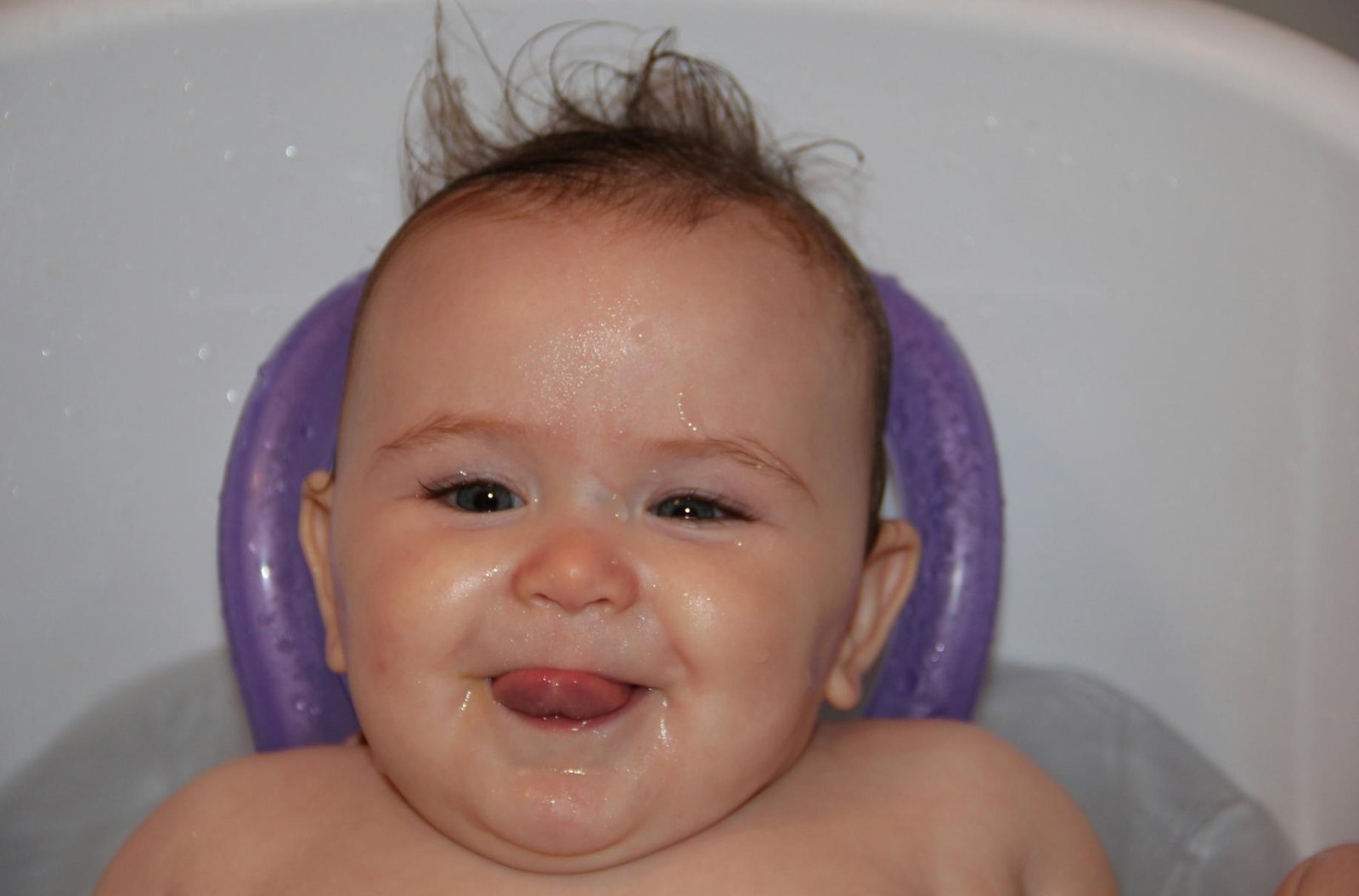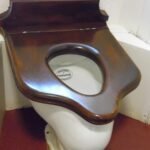Introduction: The Importance of Non-Slip Bath Mats
Ensuring a safe environment for infants and toddlers during bath time is paramount for any caregiver. The use of non-slip bath mats plays a crucial role in creating a secure bathing experience that minimizes the risk of slips and falls. Young children are naturally curious and active, making them more vulnerable to accidents when they are in potentially hazardous areas like the bathroom, where water can create slippery surfaces.
When bathing, a baby’s skin can become slick, especially when soap is applied. This increases the chances of losing grip, which may lead to dangerous situations. Non-slip mats provide a textured surface that helps keep babies stable, preventing sudden slips that could result in injuries. These mats are designed with materials that adhere securely to the tub or bathroom floor, providing an essential layer of protection that is often overlooked.
Besides adding safety, non-slip bath mats can enhance the comfort of the bathing area. They serve to cushion the hard surface, allowing babies to sit comfortably while bathing. Furthermore, these mats can be easily cleaned and dried, offering both hygiene and convenience for busy parents. Given the significant time spent bonding with a child during bath time, maintaining a pleasant and safe environment becomes all the more important.
In addition to safety considerations, it is worth noting that non-slip bath mats come in various designs and colors, allowing parents to incorporate them into their bathroom decor. This blend of functionality and aesthetic appeal makes them a valuable addition to any family bathroom. Prioritizing the selection of a quality non-slip bath mat is essential for fostering a safe bathing environment, ultimately contributing to the overall well-being of young children.
Understanding Different Types of Non-Slip Bath Mats
When selecting the ideal non-slip bath mat for your baby, it is essential to understand the various types available on the market. Each type offers unique advantages and disadvantages, catering to different preferences and requirements.
One popular option is the suction cup bath mat. These mats feature numerous small suction cups on their underside that securely attach to the bathtub’s surface. They provide excellent stability, significantly reducing the risk of slips and falls. The primary advantage of suction cup mats is their ability to adhere firmly when properly applied. However, it is vital to ensure the suction cups are intact and clean to maintain their effectiveness. Over time, wear and grime can affect their gripping ability, necessitating regular replacements.
Textured mats are another viable choice. These mats are designed with a raised surface that enhances grip, even when wet. They provide a non-slip surface through their physical texture, making them suitable for adventurous bathers. One advantage of textured mats is that their design often allows for easier cleaning compared to other types. However, some parents may find that textured mats can be uncomfortable for their babies to sit on during bath time.
Mats with rubber backing comprise yet another option, as they are typically made from durable materials that provide a secure hold on various surfaces. These mats can be easily washed and are often resistant to mold and mildew, which is a critical consideration for parents concerned about hygiene. Nevertheless, rubber-backed mats might not grip as effectively on certain surfaces compared to suction cup mats. Selecting the right non-slip bath mat requires careful consideration of your priorities, such as stability, comfort, and ease of maintenance.
Materials Matter: What to Look For
When selecting a non-slip bath mat for your baby, the materials used in the product play a significant role in determining its effectiveness, safety, and longevity. The most common materials found in bath mats include rubber, vinyl, and cotton, each offering distinct advantages.
Rubber bath mats are highly favored for their superior grip and durability. Often featuring a textured surface, rubber mats help prevent slips and falls, making them a reliable choice for families with young children. Additionally, rubber is water-resistant and can withstand daily use without showing signs of wear, ensuring that the mat remains effective over time. However, it is essential to choose mats made from natural rubber to avoid any harmful chemicals that may be present in synthetic alternatives.
Vinyl is another popular material used in non-slip bath mats, primarily due to its ease of cleaning and maintenance. Vinyl mats are often designed to be resistant to mold and mildew, which is crucial in damp bathroom environments. They are available in various designs and colors, making it easy to find one that complements your bathroom decor. Despite these benefits, it is important to ensure that the vinyl mat is free from phthalates, which can pose health risks.
Cotton bath mats provide a soft, absorbent surface that can be comfortable for your baby. While they may not be inherently non-slip, many cotton mats come with a non-slip backing that enhances safety. Additionally, cotton is often hypoallergenic, making it a suitable option for babies with sensitive skin. However, cotton mats may require more frequent washing to maintain cleanliness and prevent mildew buildup.
Overall, the choice of material in a non-slip bath mat significantly influences its performance, safety, and maintenance. Consider your family’s specific needs when assessing different options. Prioritizing durability, ease of cleaning, and hypoallergenic properties will help you make a well-informed decision for your child’s bathing environment.
Size and Fit: Finding the Right Dimensions

When selecting a non-slip bath mat for your baby, size and fit are vital considerations. A well-chosen bath mat will enhance safety while providing a comfortable environment for your little one during bath time. To begin, accurately measuring your bathtub or shower space is essential, ensuring you find a mat that fits snugly within the area without hindering movement.
To measure your space, utilize a measuring tape to determine the length and width of your bathtub or shower floor. Consider any raised edges, curves, or other features that might affect how a mat lays flat. Ideally, the bath mat should cover the most utilized sections, allowing your baby to sit or stand securely, but must not exceed the total dimensions. A mat that is overly large can pose a tripping hazard, while a mat that is too small may not provide adequate coverage for safety.
Additionally, consider the height of the bath mat. Some mats come with thicker padding, which can provide extra cushioning for comfort while seated. However, the mat’s height should not be so excessive that it introduces difficulty in entering or exiting the bathtub. Opt for a mat that offers a balance between comfort and practicality, ensuring your baby’s safety without complicating their bath routine.
It is also wise to evaluate the placement of your fixtures, such as taps or water jets, to avoid obstructing access with a bath mat. Ultimately, the right size should accommodate both safety and your specific bathing space, aiding in creating an enjoyable and secure bathing experience for your baby. Choosing an appropriately sized mat tailored to your needs will contribute to a safer and more pleasant bath time.
Design and Aesthetics: Choosing a Style Your Child Will Love
Selecting a bath mat for your baby goes beyond mere functionality; the design and aesthetics play a crucial role in making bath time enjoyable. A well-chosen bath mat can not only enhance the safety of the bathroom but also serve as an engaging element for your child. When considering design options, it is essential to explore a wide array of colors, patterns, and characters that can capture the interest of toddlers and infants.
Bright and vibrant colors are particularly appealing to children, as they stimulate visual interest and can create a joyful bathing experience. For instance, shades of blue and green may evoke a sense of calm reminiscent of a tranquil aqua environment, while yellows and pinks can add a lively touch. It can be beneficial to select hues that complement your existing bathroom decor, ensuring a cohesive aesthetic that pleases both parent and child.
In addition to colors, patterns and themes are vital considerations. Bath mats featuring whimsical designs—such as playful animals, underwater scenes, or popular cartoon characters—can engage your child’s imagination and make bath time an exciting adventure. Choosing a mat that aligns with your child’s interests, such as a beloved character or thematic elements like outer space or jungle animals, may also encourage them to develop a positive association with bathing.
Furthermore, it is important to ensure that the design of the mat does not compromise its functionality. Non-slip features should remain paramount, ensuring safety without detracting from aesthetic appeal. By carefully blending design and safety, parents can find a bath mat that not only enhances the bathroom’s look but also entertains and engages their child during bath time, making it a fun and secure experience.
Safety Features: Checking for Certifications and Standards
When selecting a non-slip bath mat for your baby, it is imperative to prioritize safety features that ensure both stability and reliability during bath time. A reputable bath mat should meet specific safety standards and possess certifications that attest to its effectiveness. Parents are encouraged to look for mats that carry certifications, such as the American Society for Testing and Materials (ASTM) or the Consumer Product Safety Commission (CPSC). These endorsements indicate that the product has undergone rigorous testing to meet established safety criteria.
One critical aspect of safety features is the anti-slip rating of the bath mat. This rating indicates how effective the mat is at preventing slips and falls, particularly in wet environments. It is advisable to opt for bath mats that are equipped with strong suction cups or adhesive backing to secure them firmly to the tub or bathroom floor. Additionally, examining the material safety of the bath mat is essential. Mats made from phthalate-free, BPA-free, and non-toxic materials provide reassurance that they are safe for your baby to use without exposure to harmful chemicals.
Moreover, consider choosing bath mats that are machine washable or easy to clean. Hygiene is paramount in maintaining a safe bathing environment, and the ability to regularly clean the mat will help reduce the buildup of mold or mildew. Look for mats designed with drainage holes or those that dry quickly, as this can further enhance safety by preventing dampness that may lead to slipping hazards.
Ultimately, evaluating the certifications and safety standards of bath mats ensures that parents invest in products that not only meet quality expectations but also prioritize their child’s safety in the bath environment.
Ease of Maintenance: Cleaning and Care Tips
Maintaining a non-slip bath mat is essential for ensuring its longevity and hygiene, particularly in a setting that involves children. Regular cleaning can help prevent the build-up of mildew and bacteria, making the bath mat safer for your baby. To care for your non-slip bath mat, consider the manufacturer’s instructions, as recommendations can vary based on materials.
Most non-slip bath mats are machine washable, which significantly simplifies the cleaning process. It is advisable to wash the mat in warm water using a mild detergent. To preserve the anti-slip properties, avoid bleach and harsh chemicals, which can wear down the texture over time. If possible, choose a gentle cycle to prevent any damage. Ensuring that the mat is completely dry after washing is also crucial, as moisture can contribute to mold growth.
Air drying is the preferred method for drying your non-slip bath mat, as it helps maintain its shape and texture. Hang the mat on a clothesline or over a towel rack in a well-ventilated area, allowing it to dry completely before placing it back in the bathroom. If you choose to use a dryer, opt for a low-heat setting, but be aware that high temperatures may alter the mat’s non-slip features.
Proper storage is another important aspect of maintaining your bath mat. When not in use, store it in a dry place to prevent moisture accumulation. Rolling the mat rather than folding it can also help to avoid creases that may compromise its effectiveness. By following these care tips, parents can ensure their non-slip bath mat remains hygienic and functional, contributing to a safer bath time for their little ones.
Budget Considerations: Finding the Best Value
When selecting a non-slip bath mat for your baby, budget considerations play a vital role. Parents often face the challenge of balancing affordability with the need for safety and comfort in their bathroom environment. The market for non-slip bath mats varies widely in price, and understanding this landscape can help in making informed choices that ensure both quality and safety.
Generally, non-slip bath mats can range in cost from as low as $10 to upwards of $40 or more, depending on factors such as material, design, and brand reputation. Lower-priced options may be tempting; however, it is crucial to evaluate the quality and effectiveness of the product. Cheaper mats might not provide adequate slip resistance or durability, increasing the risk of accidents when bathing your child.
Investing a little more upfront can often yield a significantly better product that not only features enhanced non-slip properties but also utilizes materials that are safer and easier to clean. Silicone mats, for example, tend to offer better grip and longevity compared to those made from standard plastic. Parents should consider brands that have undergone rigorous safety testing and offer guarantees or warranties, as these investments can save money in the long run by preventing the need for frequent replacements.
In assessing the best value, parents should also factor in the potential need for multiple mats if they have more than one bath or shower area. Setting a budget that allows for quality choices will ultimately help ensure that your baby’s bathing experience remains safe and enjoyable. Balancing cost with features such as design, ease of maintenance, and safety ratings will guide parents toward making the most beneficial purchase for their child’s needs.
Conclusion: Making the Final Decision
Choosing the best non-slip bath mat for your baby is a critical decision that combines safety, comfort, and practicality. Throughout the comprehensive guide, several vital factors have been underscored, emphasizing the importance of selecting a mat that provides the necessary grip and cushioning to prevent slips and falls during bath time. When evaluating various options available in the market, parents should prioritize durability and easy maintenance, ensuring that the bath mat remains hygienic and practical for everyday use.
Material choice plays a significant role; synthetic materials can offer enhanced non-slip properties but may not always be eco-friendly. Conversely, natural fibers may provide comfort but lack the same traction. It is crucial to consider these aspects based on personal preferences and any environmental considerations a family might have.
Moreover, the size and design of the bath mat are essential factors. A non-slip bath mat should fit appropriately within the bathtub while leaving room for your baby to move safely. A variety of designs are now available, enabling parents to select an option that aligns with their aesthetic preferences without compromising on safety. Attention to these details will ensure the bath area is both functional and visually appealing.
In summary, take your time when choosing the ideal non-slip bath mat for your baby. Safety should always be paramount, accompanied by an eye for easy cleaning and maintenance. By carefully considering each aspect discussed in this guide, you can make an informed decision that best fits your family’s unique needs and provides a safer bathing experience for your little one.

